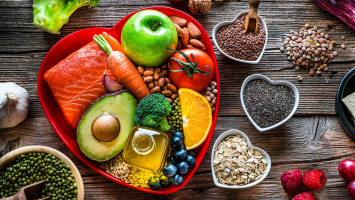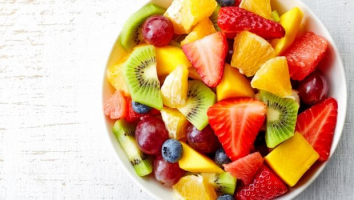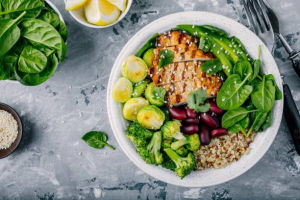Top 10 Best Diets for Healthy Eating
Dieting today has many methods, different diets and is also very diverse for everyone to choose from. Let's take a look at the best diets for healthy eating ... read more...for 2023.
-
The Mediterranean Diet ranks 1st on the list of the best diets for healthy eating, gained popularity in 1990 after the publication of a study by Ancel Keys and colleagues that found that people who followed the traditional Mediterranean diet often have better health. The diet should be rich in vegetables, fruits, whole grains, nuts, legumes (beans, lentils, peas, chickpeas, etc.) Strictly limit processed foods, added sugars and red meat to provide a rich source of natural anti-inflammatory antioxidants, including those derived from red wine in moderation.
Many studies have shown that people who eat a traditional Mediterranean Diet live longer and have lower rates of chronic diseases, including cancer and cardiovascular disease. Because it's mostly plant-based, it's also a great diet to promote gut health. Following the Mediterranean diet was also associated with lower levels of weight gain and less waist circumference over a 12-year period. One of the best things about the Mediterranean diet is thsat you can change certain foods to suit your taste. Most of your favorite treats and foods are completely off-limits, so you can easily convert them to a Mediterranean diet. You can totally stick to this diet and incorporate 30 minutes of exercise a day - it's the key to a healthy diet and healthy life.
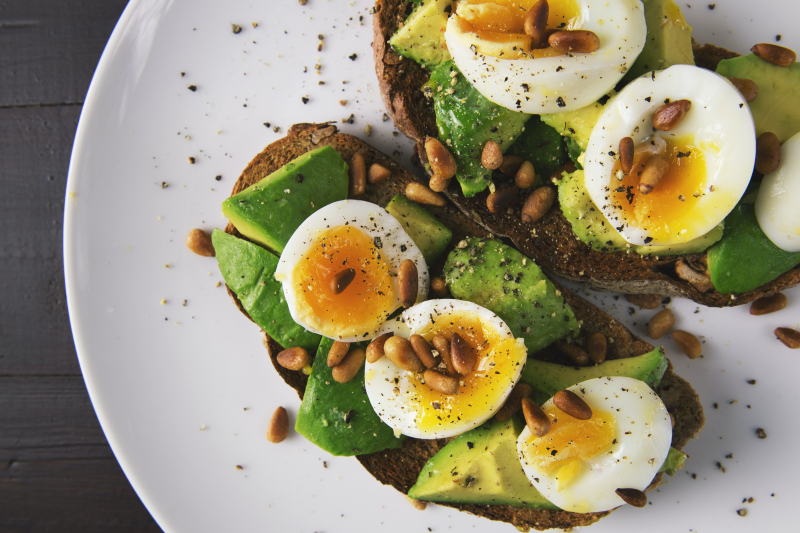
Image by Foodie Factor via pexels.com 
Image by Grape Things via pexels.com -
DASH is an acronym for Dietary Approaches to Stop Hypertension, developed in the 1990s based on research by the National Institute of Blood, Heart, and Lung (National Institutes of Health). This plan is designed to help you reduce sodium and reduce high blood pressure through a balanced diet. This study shows that DASH may help with weight loss and prevent other chronic diseases like cardiovascular disease and type 2 diabetes.
DASH Diet emphasizes large amounts of fruit and vegetables at every meal, along with lean meats, seafood, whole grains and low-fat dairy products. The DASH will be followed over the long term, in addition to limiting alcohol, stress, increasing physical activity, not smoking and getting plenty of sleep. The focus of this diet is on sodium restriction and the DASH suggests people following this diet consume 2,300 milligrams of sodium per day. To lower blood sugar even further, reduce your sodium intake to 1,500 milligrams per day. A DASH day's menu might include an omelet and a small bowl of whole-grain cereal with skim milk for breakfast; green salad with grilled chicken and a slice of wholemeal bread for lunch; a plate of pasta with salmon and a smoothie for dinner; low-fat yogurt and fruit for a snack. Those who have to cook may like the versatility of DASH as most of the recipes are easy to follow.
Image by PhotoMIX Company via pexels.com 
Image by Angele J via pexels.com -
The Flexitarian Diet, also known as the semi-vegetarian diet, was developed by registered dietitian Dawn Jackson Blatner. It recommends the use of foods of plant origin while allowing moderate intake of meat and other animal products. Whole grains, plant-based proteins, eggs, nuts and healthy plant-based fats are recommended for those on a diet.
A 2021 study in the journal Appetite classified flexible eating into three categories: climate-appropriate diets (restricting beef and lamb intake); one step for animals (eliminating chicken consumption); and humanitarian reduction (reducing all meat consumption). A flexible day that includes oatmeal with nuts and berries for breakfast, crackers with avocado and fruit for snacks, peanut butter sandwiches for lunch, and fried tofu (or chicken) for dinner. A flexible diet has been linked to weight loss and reduced rates of chronic disease, including improved health such as metabolism, blood pressure and a reduced risk of type 2 diabetes. The Flexitarian Diet is not as rigorous as other vegetarian diets but is still very healthy and has many health benefits, so pay attention to flexibility in food choices to supplement missing nutrients. Incorporate 30 minutes of exercise every day for better results.

Image by Nadine Wuchenauer via pexels.com 
Image by Kai-Chieh Chan via pexels.com -
The Therapeutic Lifestyle Change Diet or TLC Diet ranks 4th on the list of the best diets for healthy eating, was developed by the National Institutes of Health. Designed for people who want to choose a heart-healthy diet and exercise regimen. For more than a decade, medical professionals have considered the TLC diet to be one of the healthiest ways to lower cholesterol and improve heart health. The diet aims to eliminate unhealthy habits such as unhealthy eating and sedentary lifestyle. Additional options for lowering LDL cholesterol include consuming 2 g of stanols or plant sterols per day or 10-25 g of soluble fiber per day. So encourage fresh foods like vegetables, fruits, beans, seeds and whole grains.
The TLC Diet can be broken down into three parts: diet, physical activity and weight control. A 32-day study of 36 adults found that the TLC diet reduced LDL (bad) cholesterol levels by 11%. This diet is thought to work by increasing the amount of soluble fiber found in foods like oat bran, nuts, seeds, beans, lentils, fruits and vegetables. The program recommends 30 minutes of moderate-intensity exercise most days of the week to end the weight control process. In addition, the TLC diet emphasizes better eating attitudes rather than time of day eating.

Image by Jane Doan via pexels.com 
Image by Engin Akyurt via pexels.com -
The Dr. Weil’s Anti-Inflammatory Diet was developed by Dr Andrew Weil, a physician in integrative medicine who uses nutritional models to reduce chronic inflammation and related conditions such as heart disease and other diseases such as cancer and Alzheimer's disease. At its core, this anti-inflammatory diet plan approach is another version of the Mediterranean diet approach (with supplements like green tea and dark chocolate), which has been shown to help reduce swelling effectively and reduce the risk of cardiovascular disease. The program calls for a variety of fresh foods, with an emphasis on fruits and vegetables that provide phytonutrients. The diet recommends regular intake of omega-3 fatty acids and absolute avoidance of fast food, fried foods.
This Dr. Weil’s Anti-Inflammatory Diet limits your daily calorie intake from 2,000 to 3,000, depending on your gender, measurements and health goals. Remember that 40% to 50% of your calories definitely come from carbs, 30% from fat along with 20% to 30% from healthy protein. Weil recommends combining all three of those nutrients at every meal of the day.This is not a strict regimen, an anti-inflammatory diet has a lot of flexibility, including whole grains and lots of fish or fish oil supplements.

Image by Dana Tentis via pexels.com 
Image by Pixabay via pexels.com -
The Mayo Clinic Diet ranks 6th on the list of the best diets for healthy eating, comes from the highly regarded American Academy of Medicine, with a focus on health, education and integrated research. When compared to other popular, commercial weight loss programs on the market, the Mayo Clinic Diet does not appear to be an outdated diet but a modern diet that will help you change your lifestyle to be healthy. To lose weight, you have to move more and replace unhealthy diets with healthier habits.
This 12-week diet is based on completely healthy habits that have been proven by research, including unlimited intake of fruits, vegetables, whole grains and healthy fats. Consume the natural substances found in fruit, including limiting sugar in your diet. There are two main phases to the Mayo Clinic Diet, "Lose It!" and "Live It!". The first phase focuses on forming weight-related lifestyle habits. After two weeks, the next stage is to burn calories in a healthy and balanced way. The diet emphasizes a sustainable and long-term lifestyle. The Mayo Clinic Diet ranked 5th in US News' Easiest Diets to Follow. Most dieters will find it difficult during the first two weeks of phase one. After you pass phase 1, come the "Live it!" phase! At this phase, you may find it easier because no food is completely off-limits to you. The diet can be personalized to better suit your taste.

Image by cottonbro studio via pexels.com 
Image by Jane Doan via pexels.com -
“MIND” stands for “Mediterranean-DASH Intervention for Neurodegenerative Delay”, which combines the strengths of the Mediterranean diet and the DASH diet to create an eating pattern that focuses on brain health. The main goal of this diet is to prevent dementia and age-related cognitive decline, but anyone can follow the MIND diet for weight loss and overall wellness. The MIND diet emphasizes more than 10 foods that are beneficial for the brain, which are green vegetables, nuts, whole grains, berries, beans, fish, poultry... In addition, Limit margarine, cheese, red meat, fried foods, pastries...
Because MIND was created after the Mediterranean diet and DASH, there is less research on its effectiveness. However, the published research on its health benefits is impressive. In a study of nearly 1,000 older adults, those who followed the MIND diet most closely had a 53% lower risk of developing Alzheimer's disease than participants on other diets. It's relatively easy to make as it allows you to eat out. This is because the diet focuses primarily on healthy foods and doesn't require you to keep track of your daily calorie intake. Before you start the MIND diet or any other diet, talk to your doctor, who can help you come up with an eating plan that works best for you.

Image by Pixabay via pexels.com 
Image by Yaroslav Shuraev via pexels.com -
Many people think that if you want to lose weight, you have to eat less. That's not true and the Volumetrics Diet proves it. The volumetric diet was developed by Dr. Barbara Rolls, a nutritionist and obesity researcher at Penn State. This diet is based on the idea that the amount you eat leads to weight loss, not the calories you count. The gist of this diet is simple - eat lots of water-rich foods to keep you feeling full and lose weight. Nutritionists agree that this is a smart choice because it allows you to eat nutritious options like vegetables and fruits while keeping calories in check. Dieting follows an unstructured eating approach rather than restricting certain foods or severely restricting daily calorie intake.
Volumetrics Diet does not require meal times or portions. Instead, no food is nutritionally taboo, but attention is paid to the energy density of the food. The recommended daily calories for weight loss on this plan are 1,600 calories for women and 2,000 calories for men, which should be a sustainable goal for most people. Your nutritional needs may vary depending on your physical activity level, age and health concerns. If you have questions about a volumetric diet and want to make sure it's safe for you, talk to your doctor.

Image by Pixabay via pexels.com 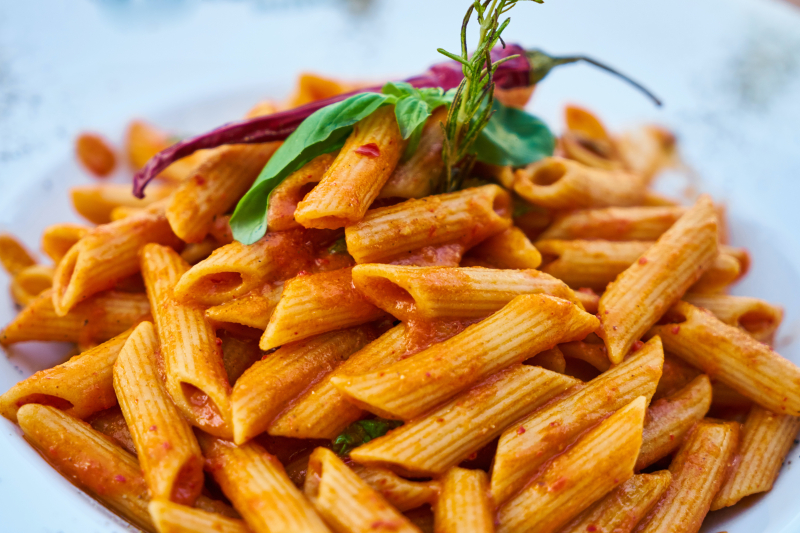
Image by Engin Akyurt via pexels.com -
Weight Watchers (WW) ranks 9th on the list of the best diets for healthy eating, is a flexible weight loss program that controls calories by calculating points for each type of food. People of different weights and heights have different target scores. Depending on the goal, there is a suitable weight loss menu. This is a well-researched, long-term and highly regarded regimen as it is not an extreme approach to long-term belly fat loss, improved health and results. This diet emphasizes an eating plan that is higher in healthy fats, protein and fiber; low-calorie foods, saturated fats and especially more than 200 ZeroPoint foods.
This regimen will help you lose one to two pounds per week. Learn how to make better food choices with SmartPoints, a program that tracks your food intake. SmartPoints find out how much protein, carbs, fat and fiber your food contains. Weight Watchers does not restrict specific foods, nor does it have meals or prepared foods for purchase. Instead, people are encouraged to make healthier food choices and increase physical activity. Many Weight Watchers groups share menus so members can give each other a variety of servings. Incorporate 30 minutes of exercise every day of the week for better results.

Image by Ella Olsson via pexels.com 
Image by KoolShooters via pexels.com -
The Ornish Diet, also known as the lacto-ovo diet, is a method studied by Dr. Dean Ornish, a physician, researcher and founder. Preventive Medicine Research Institute in Sausalito, California. This is a diet that focuses on plant-based foods and avoids fats such as fruits, vegetables, whole grains and legumes. Other foods are also allowed on the plan, including soy products, egg whites and limited amounts of fat-free milk. According to the diet's creators, simply changing your diet can promote weight loss and reverse the progression of chronic diseases like prostate cancer, heart disease and diabetes.
Unlike many other diets, the Ornish Diet is simple and easy to follow. You don't need to count the calories consumed in your meals. Also, with the exception of most animal products, no food is completely off-limits in the diet. However, restrictions on meat, fish and poultry, high-fat foods such as nuts, seeds and vegetable oils are allowed in limited quantities. Fruits, vegetables, whole grains, legumes and soybeans are indispensable. Egg whites are also allowed and can also enjoy up to two daily servings of fat-free dairy products like milk and yogurt. In addition, caffeinated beverages, refined carbs, sugar, alcohol and low-fat processed foods should be limited. In addition to changing your diet, you should also do moderate exercise for at least 30 minutes a day for maximum results.
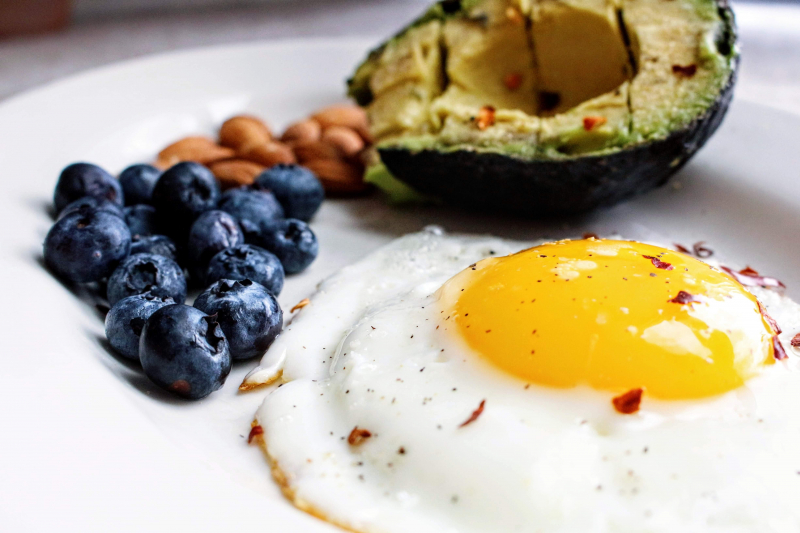
Image by Jenna Hamra via pexels.com 
Image by Dana Tentis via pexels.com












